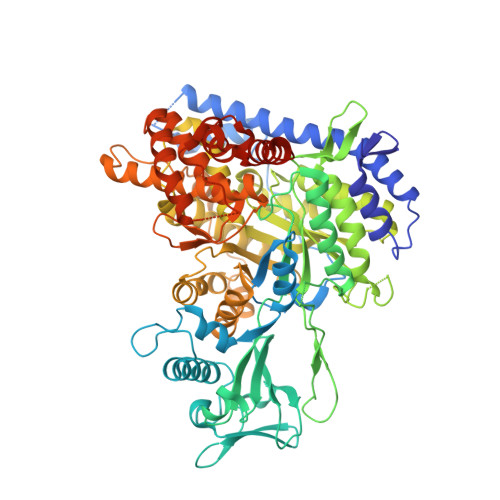Mycobacterium tuberculosis Malate Synthase Structures with Fragments Reveal a Portal for Substrate/Product Exchange.
Huang, H.L., Krieger, I.V., Parai, M.K., Gawandi, V.B., Sacchettini, J.C.(2016) J Biological Chem 291: 27421-27432
- PubMed: 27738104
- DOI: https://doi.org/10.1074/jbc.M116.750877
- Primary Citation of Related Structures:
5C7V, 5C9R, 5C9U, 5C9W, 5C9X, 5CAH, 5CAK, 5CBB, 5CBI, 5CBJ, 5CCZ, 5CEW, 5CJM, 5CJN, 5DRC, 5DRI, 5DX7, 5E9X, 5ECV, 5H8M, 5H8P, 5H8U, 5T8G - PubMed Abstract:
Fragment screening and high throughput screening are complementary approaches that combine with structural biology to explore the binding capabilities of an active site. We have used a fragment-based approach on malate synthase (GlcB) from Mycobacterium tuberculosis and discovered several novel binding chemotypes. In addition, the crystal structures of GlcB in complex with these fragments indicated conformational changes in the active site that represent the enzyme conformations during catalysis. Additional structures of the complex with malate and of the apo form of GlcB supported that hypothesis. Comparative analysis of GlcB structures in complex with 18 fragments allowed us to characterize the preferred chemotypes and their binding modes. The fragment structures showed a hydrogen bond to the backbone carbonyl of Met-631. We successfully incorporated an indole group from a fragment into an existing phenyl-diketo acid series. The resulting indole-containing inhibitor was 100-fold more potent than the parent phenyl-diketo acid with an IC 50 value of 20 nm.
- From the Departments of Chemistry and.
Organizational Affiliation:


















